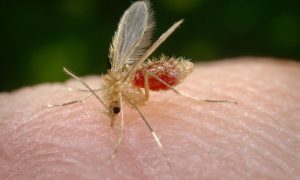Menopause isn’t always rainbows and butterflies, but it doesn’t have to be a Pandora’s Box of discomforts either. Menopause is a natural biological change in women’s lives. It’s a time when our body functions and organs, like the ovaries, start to slow down. Your hormone levels also decrease during this time, and as a result, you may experience discomfort.
In contrast to what many of us believe, menopause doesn’t happen in an instant. It’s a journey that has three stages: perimenopause, menopause, and postmenopause. During this period, a woman’s body undergoes significant changes.
During postmenopause, many of the symptoms you experienced during perimenopause or menopause may cease. However, there are several health issues to consider which may be caused by your body’s decreased hormone levels.
For better management of the body and health during the postmenopausal period, HealthShots reached out to Sharanya S Shastry, a chief clinical nutritionist at Apollo Spectra Hospital, Koramangala, Bangalore.
Dr Shastry says, “In general, menopause is usually confirmed after 12 months following the last menstrual cycle but the initial symptoms, discomfort, and overwhelming emotional changes can begin much earlier. Hormonal and physical changes can all lead to a number of nutritional deficiencies. These hormone imbalances also make women more susceptible to declined bone density and calcium deficiency.”
There are several risk factors linked with menopause but good nutrition and certain lifestyle changes can help a woman deal with the stage with ease, shares the expert.
Here are a few guidelines that one can follow postmenopause:
1. Add nutrients
Add enough calcium, iron, and fiber to the platter. Inclusion of calcium-rich, iron, and fiber related food items in the diet can help a woman maintain a healthy eating regimen. These food items help to build muscles, make hemoglobin, increase bone density and improve bowel movement. Broccoli, dairy products, fish, meat, green leafy vegetables, fresh fruits, bread, cereals are a few that can be included in the platter. The recommended iron allowance for a woman in a day is 8 milligrams and fiber is 21 grams.
2. Intake of salt and sugar in moderation
Certain foods may trigger hot flashes, night sweats and mood swings. Common triggers may include salt and sugar. “Excess sodium in the diet can give rise to high blood pressure problems. High nitrate level is linked with cancer, therefore, one should avoid smoked or salted, processed and charbroiled food items,” says Dr Shastry.

High-fat food items are another potential reason to raise cholesterol levels and give rise to heart-related ailments. Fatty meat, excess cheese, and ice cream should be taken in moderation.
3. Stay hydrated
Hydration is the most important step that can be the answer to every health problem. Intake of eight glasses of water every day can help a person stay hydrated and flush out the excess toxins from the body.
4. Decrease liquor consumption
Consuming alcohol can double the problems and risks for any person. Dr Shastry says, “Quitting or controlling the liquor consumption can help a person live longer with fewer health issues. Women should limit themselves to one or two times per week post-menopause.”

5. Maintain healthy body weight
It is common to gain weight during menopause. This can be due to a combination of changing hormones, ageing lifestyle, and genetics. To maintain a healthy weight, regular exercises and workout routines must be followed on an everyday basis. Brisk walking, jogging, and zumba can also serve the purpose. One should always remember that diet and exercise if followed together diligently, one can achieve healthy body weight, suggests Dr Shastry.
Apart from the above-mentioned guidelines, magnesium and vitamin B12 also serve as powerful supplements for post-menopausal health. Periodic medical tests and examinations are crucial for women to maintain a healthy postmenopausal health.





































